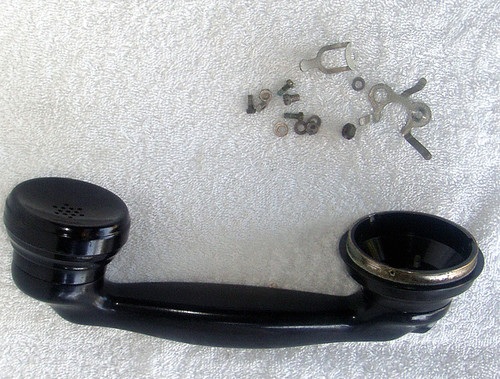For the "bakelite collector" or someone who revels in historical Australian manufacturing and wartime society
Back in the 1940's - 50's there was a lot of general interest in the electronics field surrounding communications, in particular the learning and use of morse code. Particularly in the early 1940's, remember we were at war with the "Japs" and prior to and after the bombing of Darwin, citizens and radio enthusiasts were encouraged to keep a look out or listen in the shortwave bands for any signs of impending approaches by the Japanese Imperial Forces. This was a way by which the "general population" could aid the war effort, keep the eyes wide open, listen (if you have a shortwave radio) and report anything suspicious.
Radio enthusiasts and "hams" were particularly valued because they often possessed highly tuned radio communication skills, so a lot of people wanted to learn all about Morse Code and shortwave radio in general.
I have included a snapshot from the Australian magazine, Radio And Hobbies 1942 and you will see what I mean, the advertisement placed by an radio spare parts retailer in Sydney is full of morse keys, morse sets (with a buzzer) and just buzzers alone. It is interesting from the perspective of spare part shortages too, during the war it became extremely difficult to get spare parts for radio equipment, batteries in particular were very hard to come by. Solution? use a kitset wet cell, there is one in the advertisement and this would have been used in conjunction with this buzzer, along with a morse key.
Magazines such as the issue I have grabbed a snapshot of are very interesting. Its not all about electronics but a large number of the articles understandably talk about the war, how to recognise "Jap war planes" and generally how the average citizen can support the war effort.
As for the manufacturer (or is it their trademark?) Federal, or as it is marked on the case top, NC FEDERAL, I cannot find out any information about them at all. There was the well known Federal Match Company in Sydney but I don't think that company had any connection with electronic buzzers or the production of thermopress materials such as bakelite.
Low Voltage DC/AC Buzzer in an enclosure
NC FEDERAL
Made In Australia
Brown bakelite
Plated metal/brass top section knurled securing screw
Designed for 3V DC or 5V AC use
Fully adjustable contact gap spacing and horizontal arm adjustment.
Weight: 200g
Dimensions: 75mm x 77mm x 47mm height
COSMETIC CONDITION:
Clean bakelite
Clean contact points (I have polished them up)
No broken pieces BUT there are two corner cracks in the lid - from the bottom of the lid almost to the top. That's the problem with bakelite, it doesn't handle physical stress too well! The lid is still very sound and not fragile and I have made no attempt at repair of the cracks, they are not very visible so I have left them alone.
TESTING:
Bakelite authenticity tested, chemical rubbing (leaves a yellowish/brown stain on the wiping cloth) heat pin prick test and hot water smell test of the lid (love that formaldehyde smell!) - the material used to construct this enclosure is the real deal, bakelite.
The dual electromagnet coil measures 3 Ohm, so with the design 3V DC input and assuming a 50/50 duty cycle, the current drawn could be up to 500mA when it is "buzzing"
Sounds like a lot of current but if you look at the specs of those kitset wet cells, they are rated up to 2A/Hr so no issues at all with the supply current.
I have not tested it with an AC supply but there is no reason why that shouldn't work as well. It may be thought a bit strange that it is also for use with 5V AC but remember that tube equipment used 5V AC heater supplies in those days, so access to 5V AC was easy.
It buzzes! not extremely loud but it gives a nice even buzzing sound when powered up.
NOTE: It would be a good idea to wire a capacitor across the contact gap otherwise the sparking without a "quench" is going to quickly pit and degrade the contact points. Just a 0.1uF 100V or more polyester will do the trick here.
Nice piece of radio & electronics nostalgia!











